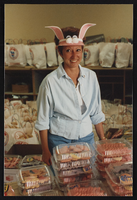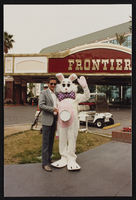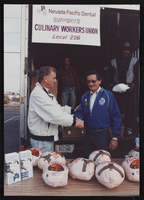Search the Special Collections and Archives Portal
Search Results

Frontier Easter Bunny and food drive, Culinary Union, Las Vegas (Nev.), 1992 April 14 (folder 1 of 1), image 2
Date
1992-04-14
Description
Arrangement note: Series II. Public Events
Image

Frontier Easter Bunny and food drive, Culinary Union, Las Vegas (Nev.), 1992 April 14 (folder 1 of 1), image 3
Date
1992-04-14
Description
Arrangement note: Series II. Public Events
Image

Frontier Easter Bunny and food drive, Culinary Union, Las Vegas (Nev.), 1992 April 14 (folder 1 of 1), image 4
Date
1992-04-14
Description
Arrangement note: Series II. Public Events
Image

Frontier Easter Bunny and food drive, Culinary Union, Las Vegas (Nev.), 1992 April 14 (folder 1 of 1), image 5
Date
1992-04-14
Description
Arrangement note: Series II. Public Events
Image

Frontier Easter Bunny and food drive, Culinary Union, Las Vegas (Nev.), 1992 April 14 (folder 1 of 1), image 6
Date
1992-04-14
Description
Arrangement note: Series II. Public Events
Image

Frontier Easter Bunny and food drive, Culinary Union, Las Vegas (Nev.), 1992 April 14 (folder 1 of 1), image 7
Date
1992-04-14
Description
Arrangement note: Series II. Public Events
Image

Frontier Easter Bunny and food drive, Culinary Union, Las Vegas (Nev.), 1992 April 14 (folder 1 of 1), image 8
Date
1992-04-14
Description
Arrangement note: Series II. Public Events
Image

Frontier Easter Bunny and food drive, Culinary Union, Las Vegas (Nev.), 1992 April 14 (folder 1 of 1), image 9
Date
1992-04-14
Description
Arrangement note: Series II. Public Events
Image

Frontier Easter Bunny and food drive, Culinary Union, Las Vegas (Nev.), 1992 April 14 (folder 1 of 1), image 10
Date
1992-04-14
Description
Arrangement note: Series II. Public Events
Image

Frontier Easter Bunny and food drive, Culinary Union, Las Vegas (Nev.), 1992 April 14 (folder 1 of 1), image 11
Date
1992-04-14
Description
Arrangement note: Series II. Public Events
Image
Pagination
Refine my results
Content Type
Creator or Contributor
Subject
Archival Collection
Digital Project
Resource Type
Year
Material Type
Place
Language
Records Classification
